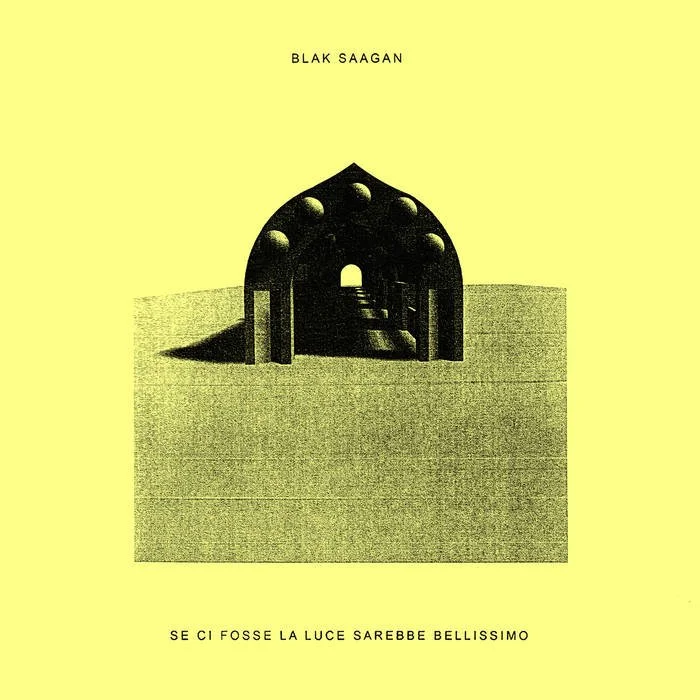Review:
Se ci fosse la luce sarebbe bellissimo
Every morning, Antonio Spiriticchio, florist, drove his van to a corner in the centre of Rome, where he’d set up his mobile flower shop. But on the morning of the 16th of March, 1978, Spiriticchio didn’t show up at his usual spot at the usual time. To his dismay, overnight, all four of his van’s tires had been slashed. In the meantime, at the corner where Spiriticchio normally would have been plying his wares, seven men and four women, all members of the far-left guerrilla group Red Brigades, were committing a crime that went on to define one of the darkest chapters of Italian history: the kidnapping of former prime minister Aldo Moro.
With his second album Se Ci Fosse La Luce Sarebbe Bellissimo, Venetian producer Samuele Gottardello, in art Black Saagan, tells the story of the kidnapping and the 54 days that preceded the discovery of Aldo Moro’s body in the trunk of a red Renault 4 parked along Via Caetani in Rome.
Rather than a history lesson, Se Ci Fosse La Luce Sarebbe Bellissimo is a pensive and imaginary soundtrack to an event that forced a nation to reflect on its contradictions. It’s a work of hauntology, an album that recalls a collective trauma from beyond the grave and forces us to breathe the heavy air of those years. Gottardelli’s work does so without the need to spell out what happened, using only song titles to guide us through the tension, the drama, and the ridicule of a sociopolitical controversy on the global stage. Farfisa organs, Krautrock, and post-punk influences are combined to create a textured, monotonous smog, industrial landscape, the rarefied atmosphere of the empty streets punctuated by police checkpoints, the confusion of a generation inside the political, social and cultural petri dish that was the Italy of the 70s and early 80s.
It’s a dense album that opens with loops of Kraftwerkian memory in “Convergenze Parallele”, shifts to the pure synth-wave sounds of “Scuola Hyperion” and “Achtung! Achtung!”, and nods at the Italian Occult Psychedelia scene with songs straight out of a B-list Italian police show, like “Ore 9: Attacco Al Cuore Dello Stato”. Mystical, celestial flutes take us in the room where a group of academics from Bologna, including future Italian prime minister Romano Prodi, held a seance to ask a deceased Catholic priest where Moro might be held captive in “E Lo Spettro Disse ‘Gradoli’”.
“Se Ci Fosse La Luce Sarebbe Bellissimo” (Eng: If There Were Light It Would Be Beautiful) are the last words written by Aldo Moro to his wife Eleonora in one of 86 letters he penned while held captive by the Red Brigades. The eponymous track concludes the emotional journey that Gottardelli takes us through. It’s an eight-minute ethereal masterpiece, a somewhat cathartic closure that manages to feel peaceful despite being the epilogue of a tragedy.
In “The Uses and Abuses of History for Life” Nietzsche wrote that we must strike a balance between remembering and forgetting, so that history can be at the service of life rather than the other way around. Se Ci Fosse La Luce Sarebbe Bellissimo is an important body of work because it manages to be a complex, dedicated act of remembrance without resulting in an exercise in erudition. It tells a story of emotional states that we ought to remember, if only to understand the present.
It’s an overdue surprise to find that Italian artists can still gift us with music that has substance and purpose. In a country that seems to have fully embraced the philosophy of panem et circenses, bread and circus, where the superficiality of instantaneous gratification reigns sovereign, the underground scene has taken it upon itself to remind us that there are important conversations to be had. We can always dance later.
